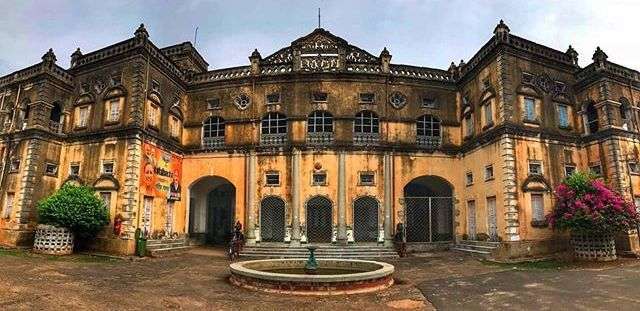Many years ago, I was a young, shy, quiet student of print journalism in New Delhi, as also a Times of India trainee. Our professor constantly kept thebatch of 11 trainees on their toes. “There is no such thing as a stupid question,” he hammered into us. “The question that is in your mind, which you don’t ask — that is the question that makes you stupid because you never get to know the answer.”
These are wise words that have stood me in good stead throughout my long career in journalism. Sometimes, some people feel offended by questions, but such are occupational hazards. Not everyone need like you nor agree with you. It’s getting the information that is important.
Last week, I sought answers to the basic question of what ‘Kalahandi’ means, and to my surprise, I received a treasure trove of information. This week, I share the treasure with you…
By far, the most widely accepted meaning appears to be “Pot of art, culture and handicrafts”. Then given the overcast skies throughout Kalahandi for the past week, the ‘clouds hanging over the valley’ theory cannot be altogether discounted; although we may add that clouds actually hung low over many districts of Odisha in the past weeks of winter. But there are other meanings too that are being put forward, and that would need to be considered as well.
Dr Sarita Sarangi, who heads an NGO for children in Kalahandi, asserts that kala stands for black and handi for an earthen pot, symbolizing a rice bowl.
“As a proud bahu of Bhawanipatna, I can vouch for the richness of its culture, tradition and material resources…” she writes, but warns against the “politicization of poverty”. “That Kalahandi has always been a rice-surplus region needs to be highlighted before its identity is buried under the label of a poverty-stricken region,” she says.

Another academician and researcher had some interesting historical facts to add. While doing research work on Puri district, Mrs.Sasmita Panda came across some literature on the nomenclature of some places in Odisha. She reiterated two widely accepted descriptions of Kalahandi: ‘Black Pot’, since earthen pots here were made of the black cotton soil prevalent in the district; and Kalahandi as a pot of art and culture. However, she considers these theories as speculative. She points out that in 1718, an inscription was made at Dadhibaman Temple, issued by King Jugsai Deo from ‘Kalahandi Nagar’. The structure, once a fort,is now in ruins. The current name of the place is Junagar, which translates to “old town”.
There is also the possibility, she adds, that the word ‘Kala’ has been derived from the name of the Kalachuri kings, specifically King Kalahambir who had ruled the region for some years in ancient times.
Further, she explains, the word handi, which means a pot or storehouse, also denotes a common kitchen or eating place for people of a particular lineage who tend to live near each other. Many places within the district and its bordering areas have the suffix of ‘handi’ to their names. Ms.Sasmita points out the examples of Gudahandi, Papadahandi, Sasahandi, Bakahandi, Bajahandi etc.Such traditions also extend to the Bastar tribal area of Chattisgarh. While enthused by the topic, she believes more research is required to get to the bottom of our question.
If,at this point, we were to make a list of meanings for Kalahandi, it would be the following:
- A pot of art and culture
- A valley fringed by mountains over which dark clouds hang
- A black earthen pot or rice bowl signifying the surplus of rice production in this district
- A black earthen pot alluding to the black cotton soil of the district
- A name derived from the old capital of Kalahandi Nagar with handis being the places where people of certain lineage would eat together
- andfinally, a reference to the thick dark forests of this area, which are perhaps not as thick and as dark as they once were.
There is something to be said for the last of the above points. A few year after my marriage, when visiting relatives in Jagdalpur (now Chattisgarh, but at that time in Madhya Pradesh), I sat with the old mother-in-law of my hostess. Given my curiosity about her, she was delighted to talk with me. Her dark skin gleaming, her eyes bright, through a toothless smile she charmingly told me: “My father-in-law selected me as a wife for his son, because of my voice. He told me I read the scriptures like a Koyal.”
When were you married, I asked. “A very long time ago — soon after India’s independence. There were no roads. We sat in oxen carts and rode through thick, dark jungles. It took us many weeks to come here from Bhawanipatna, my hometown. I rarely went back to visit my mother’s home because it was so far and so hard to travel through the jungles.”
Of course, by the 1950s and ‘60s, roads and bus routes must have come into existence. But the thick, dark forest theory too prevails.
(The views expressed are the writer’s own)
About the writer:

Nasima H Khan spent her early childhood in the United States, and thereafter grew up and lived in New Delhi. She has worked as a journalist for 15 years with The Economic Times and later as an editor with India Today news magazine. She was also an editor with newspapers in Oman. For the past 12 years, she has been teaching Journalism and Communication to undergraduate students.
Email: [email protected]

